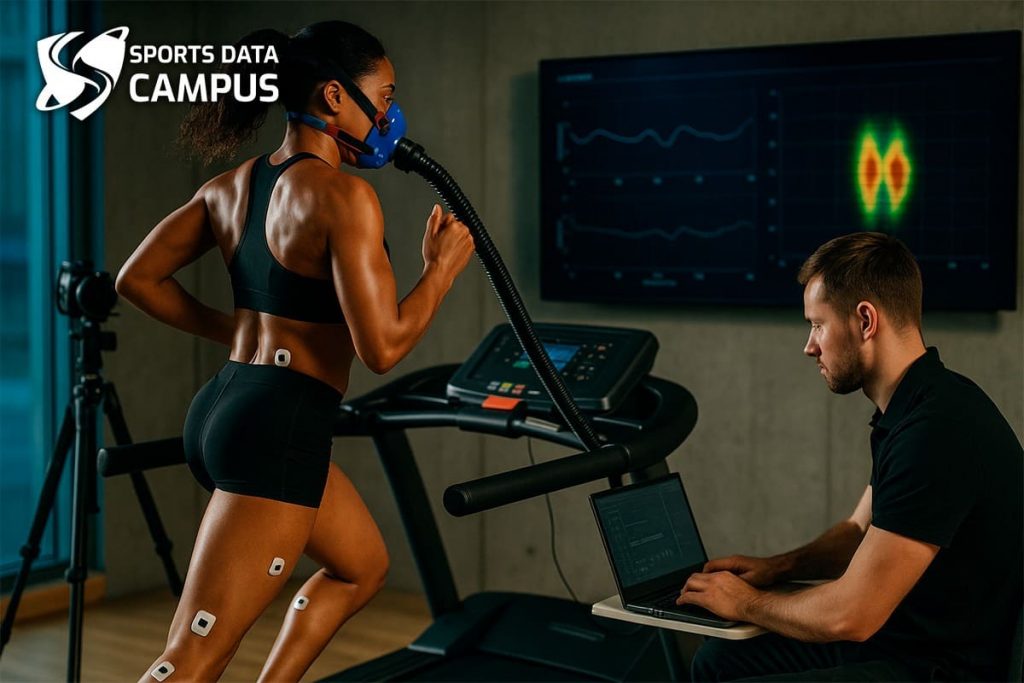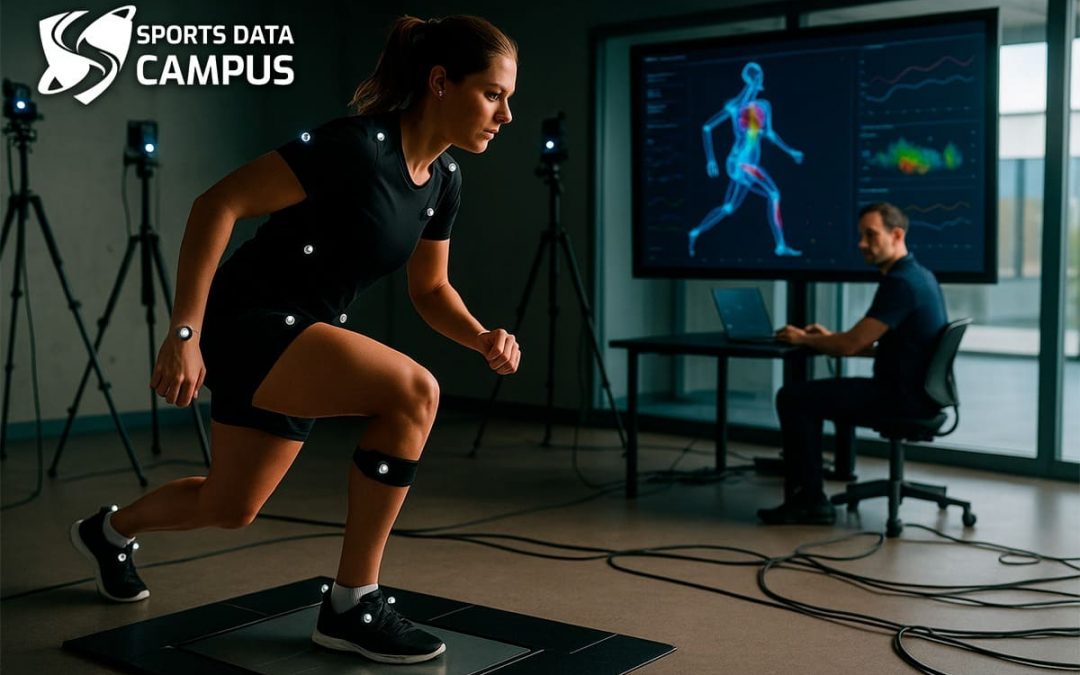Sports injury prevention with machine learning marks a decisive shift in the way athletes’ health is protected. Thanks to advanced data analysis and algorithms that learn from experience, it’s now possible to anticipate risks before they happen. This approach blends performance metrics, biomechanical insights and individual factors to design tailored strategies that lower the chances of physical damage. From spotting overload patterns to fine-tuning workloads, machine learning makes it possible to act with both speed and accuracy.
Discover how Artificial Intelligence is shaping injury prevention, which predictive models are used in training, the role of technology in recovery, and how the TRIPP model provides an innovative framework that brings together science, data and methodology in high-performance sport.
Sports injury prevention with machine learning
The use of Artificial Intelligence in injury prevention
Artificial Intelligence is transforming injury prevention by enabling large-scale, precise data analysis that was once out of reach. Through sensors, cameras and analysis platforms, every detail of an athlete’s performance can be tracked, allowing the detection of subtle variations in technique that might lead to injury.
Machine learning algorithms spot risk patterns by linking factors such as biomechanics, workload, medical history and recovery status. This predictive power not only warns of potential issues but also suggests tailored adjustments to training and routines. It also takes into account external variables like rest, nutrition and mental health to build individual risk profiles that enhance both safety and performance.
Data analysis to identify risk patterns
Data analysis for sports injury prevention involves collecting, cleaning and examining relevant information to uncover early warning signs of risk. This process begins with the integration of data from motion sensors, tracking platforms, medical records and performance metrics. Cleaning and normalising this data is essential to avoid bias and ensure reliable results.
Once prepared, exploratory techniques and visualisations are applied to detect anomalies in biomechanics, workload or recovery. Statistical models and machine learning go deeper into the relationships between variables, identifying patterns that come before specific injuries.
Segmenting by sport, position or an athlete’s history adds greater precision, since risk is never uniform. Continuous monitoring also ensures models are updated with new information, making it possible to intervene before signs of overload turn into real injuries.
Integrating machine learning, advanced data analysis and innovative models such as TRIPP allows sports injury prevention to be tackled from a more complete and efficient perspective
Predictive models and their application in training
Predictive models use both historical and current data to anticipate risk situations and optimise performance. In sports injury prevention, they help estimate when an athlete may be close to overload or a physical imbalance that could compromise safety.
These models draw on information such as heart rate, recovery times, strength, speed and endurance metrics, along with contextual data like weather, playing surface or competition schedule. Algorithms such as neural networks, decision trees and advanced regressions process these variables to generate alerts and personalised recommendations.
Their practical use includes adjusting workloads, tailoring preventive exercises and planning strategic rest periods. They also support recovery after an injury by calculating optimal reintegration times.
When combined with real-time analysis from wearable devices, these models allow coaches and medical teams to make fast, well-informed decisions. This reduces risks and improves efficiency in every session.
Optimising training programmes
The optimisation of training programmes with machine learning is based on tailoring each session to the athlete’s real needs, avoiding excessive loads while boosting safe progress. Using data gathered on performance, fatigue, recovery and technique, algorithms dynamically adjust exercise intensity, volume and frequency.
This approach makes it possible to identify exercises that bring benefits without raising injury risk and discard those that, due to the athlete’s physical condition or history, could be counterproductive. It also supports the planning of microcycles and macrocycles that balance work and rest, keeping physical preparation at an optimal level.
By integrating external factors such as travel, weather conditions or competition phases, the system produces personalised and flexible plans. In this way, injury prevention becomes a natural part of training, ensuring performance develops consistently and safely over time.

The role of technology in injury prevention and recovery
Technology expands the possibilities of preventing and treating injuries through tools that can monitor, diagnose and optimise every stage of the process.
- In prevention, wearables and tracking systems collect key metrics such as workload, movement patterns and fatigue levels. Analysing this data in real time makes it possible to detect deviations that could lead to injuries and act immediately.
- In recovery, advanced imaging devices and telemedicine platforms enable fast diagnoses and continuous monitoring, even remotely. Virtual reality and immersive environments provide controlled exercises that support both physical and mental readaptation, while technologies such as electrotherapy or exoskeletons accelerate functional rehabilitation.
Bringing these solutions into the daily work of coaches, physiotherapists and sports doctors creates an ecosystem where every decision is based on precise data, improving safety and efficiency throughout the athlete’s activity cycle.
TRIPP model. An innovative approach
The TRIPP model provides a framework for designing prevention strategies that combine data analysis with the practical reality of high performance. It integrates three key dimensions: precise risk identification, the implementation of interventions tailored to the athlete’s context, and continuous evaluation to refine preventive measures.
In this approach, multidisciplinary networks – coaches, fitness trainers, doctors and data analysts – are essential. Trust and cooperation between all parties ensure that information collected through technology translates into effective actions. This allows the personalisation of training programmes, early correction of technical errors and the optimisation of recovery after an injury.
Integrating machine learning, advanced data analysis and innovative models such as TRIPP enables sports injury prevention to be tackled from a more complete and efficient perspective. This approach brings together science, technology and multidisciplinary teamwork to anticipate risks, optimise training and enhance recovery processes.
Gaining expertise in these areas will open the door for you to lead projects that transform physical preparation and performance in modern sport – a path you can pursue with the Master’s in Artificial Intelligence Applied to Sport, designed to make you a benchmark in applying technology to high performance.
Fill in the form and get full details about the Master’s in Artificial Intelligence Applied to Sport


